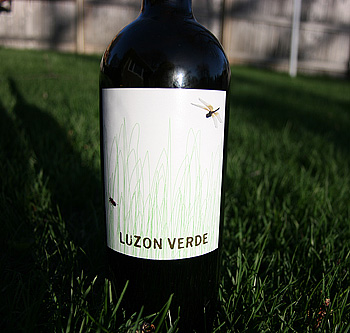For most Canadian shoppers a product is only organic when there is some kind of certification on the bottle. That single decision causes a number of problems invisible to the consumer, and having nothing to do with a farmer’s decision to forgo pesticides and use manure.
I was speaking to Isidoro Perez de Tudelo, a spokesman for Jumilla producer Finca Luzon and after talking to him you begin to understand the complexities both from a shopper’s and a producer’s point of view.
Luzon is a smaller producer Spain in the Jumilla appellation. The appellation straddles two provinces Murcia and Albacete in the southeast of Spain, slightly inland. Depending on which Canadian province you are in you may find as many as half a dozen wines of their wines at any given time. Their style is modern, tending to high fruit, high alk, with a thick, viscous texture. They are wonderfully drinking wines, and most of the public adores this style.
[related_content slugs=”dr-booze-on-the-subtlety-of-pinot-blanc,dr-booze-on-italian-wines-priced-to-drink,dr-booze-takes-on-the-intimidatingly-named-gewurztraminer-wine,dr-booze-switches-to-beer-fruit-beers-that-is” description=”More from James Romanow” position=”right”]
The vineyard was formed in 1916 and started bottling under their own name in 1925. In 1993 the family sold the farm to a large agricultural group. Shortly after the millennia, the group decided to make all of their farms organic. So much for the theory that smaller producers are intrinsically more morally upright.
The winery has about 500 hectares, roughly two sections of land, under cultivation. (You can earn a tidy living as a vintner with as little as 10 Ha.) As with many vintners the entire vineyard is managed organically. However only about 20 per cent is certified organic.
Things are made more difficult by the various certification bodies. Initially Luzon had to get certified by the NOP and Europe. Although probably more Europeans prefer to eat and drink organically, the statement from the winemaker that their winery was organic was sufficient… until recently. Also there was the problem that all members of the EU tend to be suspicious of other countries’ standards. Achieving unanimity across the union, and then – mirablis dictu! – agreeing with the NOP standards as well took several years of arguing between consumers and producers.
Agreement was achieved although initially Luzon paid to be certified under both NOP, and then the European system, roughly $45,000 each, not including internal costs. “It is not the license fee but the time that is expensive,” Isidoro says.
The net result is organic vineyards that are not allowed to be claimed as such on the bottle. In the case of Luzon, some of this is happenstance. The Luzon vineyards are high and hot and there are fewer bugs, hence fewer chemicals. It does mean however that the vines are irrigated. If they taste a little to you like Argentinian or Chilean wines, some of the reasons is the sandy soil with a hot daily climate and cool nights, rather like the plateaus under cultivation in South America.
The organic wine on the shelf here, Luzon Verde, is among the most attractive of labels in that section. It is largely monastrell (AKA mouvedre). The wine suits the graphic design, being fresh and fruity with a nice edge of acidity, with a touch of astringency on the finish. It is a very rounded palate that will suit New World drinkers.
In short this is a very nice organic wine, maybe the best on prairie shelves, and my favourite at this price point.
So what do we make of the rest of the Luzon line up? As long as you accept their word they too are organic. I think of such wines as quasi-organic. So gentle reader, over to you.
I can recommend Seleccion 12 unreservedly. It is a tremendous deal, a six year old wine, with that huge unctuous palate that can only come from a hot vineyard. The giant palate has been tamed by several years in the bottle. If you’re trying to start a cellar, I’d lay down a case of this one and drink it over the next ten years.
Altos de Luzon is another great wine, but here we’re starting to get beyond most people’s budgets. It’s another of this Luzon’s juicy fat wines, about half monastrell, the remainder split between cabernet sauvignon and tempranillo. It goes fabulously with a barbecued steak, and if you are up for the price I’d recommend it.
Finally there is Alma de Luzon, the Finca Luzon flagship. It too is monastrell, about 70 per cent monastrell, 20 per cent cabernet sauvignon, and 10 per cent syrah. Definitely a cellar or special night wine if you like to drink serious wine, here’s what Luzon thinks is what their land produces best.
There are other wines from Finca Luzon available in North America, some of them labeled organic. I recommend you keep an eye out for the winery whether you endorse their organic practices or not.
But I would very much like all readers to take away the notion that wine, European wine very much in particular is often closer to organic without any certification. A surprising number of French and Italian vineyards are organic, both with and without certification, and never bother to mention the fact. (e.g. Perrin Beaucastel) If you live and die by organic products I would urge you to do more research.
Luzon Verde, Spain, 2011. $14.70 ****
Luzon Seleccion, Spain, 2016. $17.95 **** Deal Alert!
Altos de Luzon, Spain, 2005. $28.21 ****
Alma de Luzon, Spain, 2005. $55.49 *****
–
James Romanow writes about wine and all things boozy for the Spectator Tribune. Follow him @drbooze.
